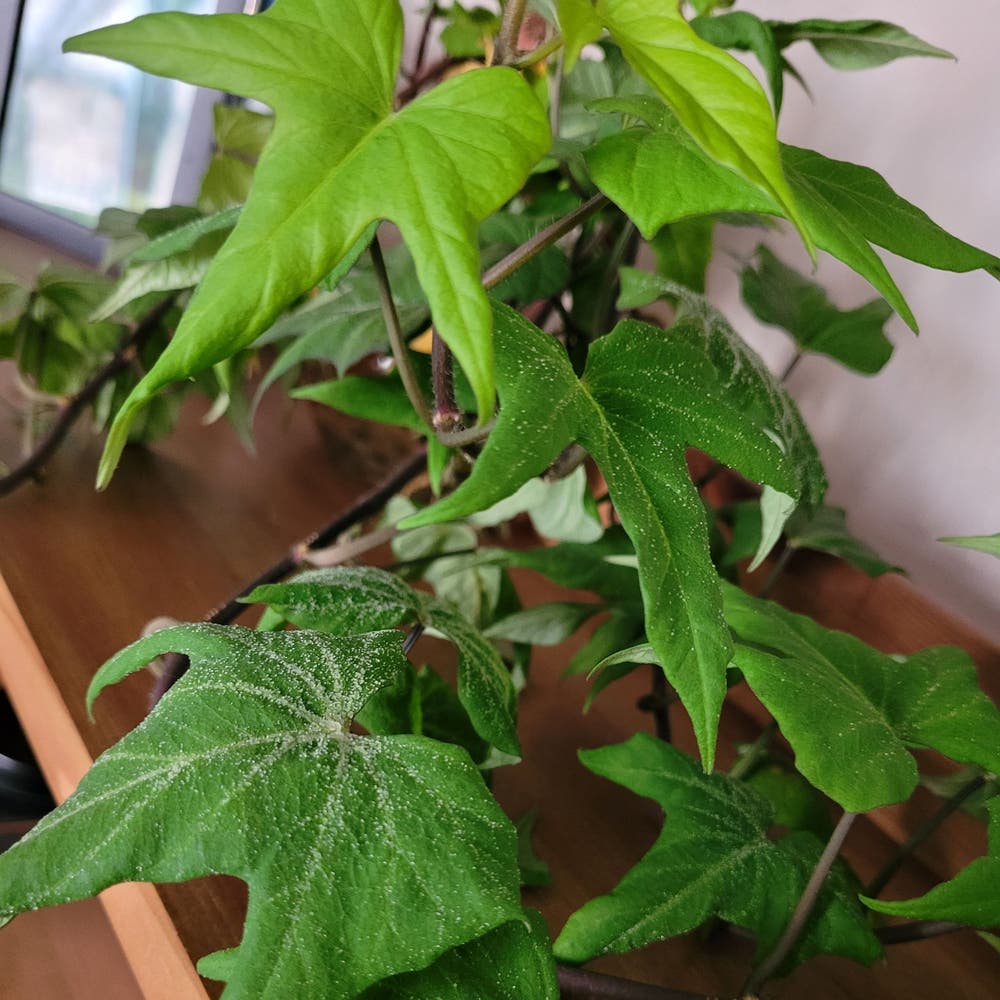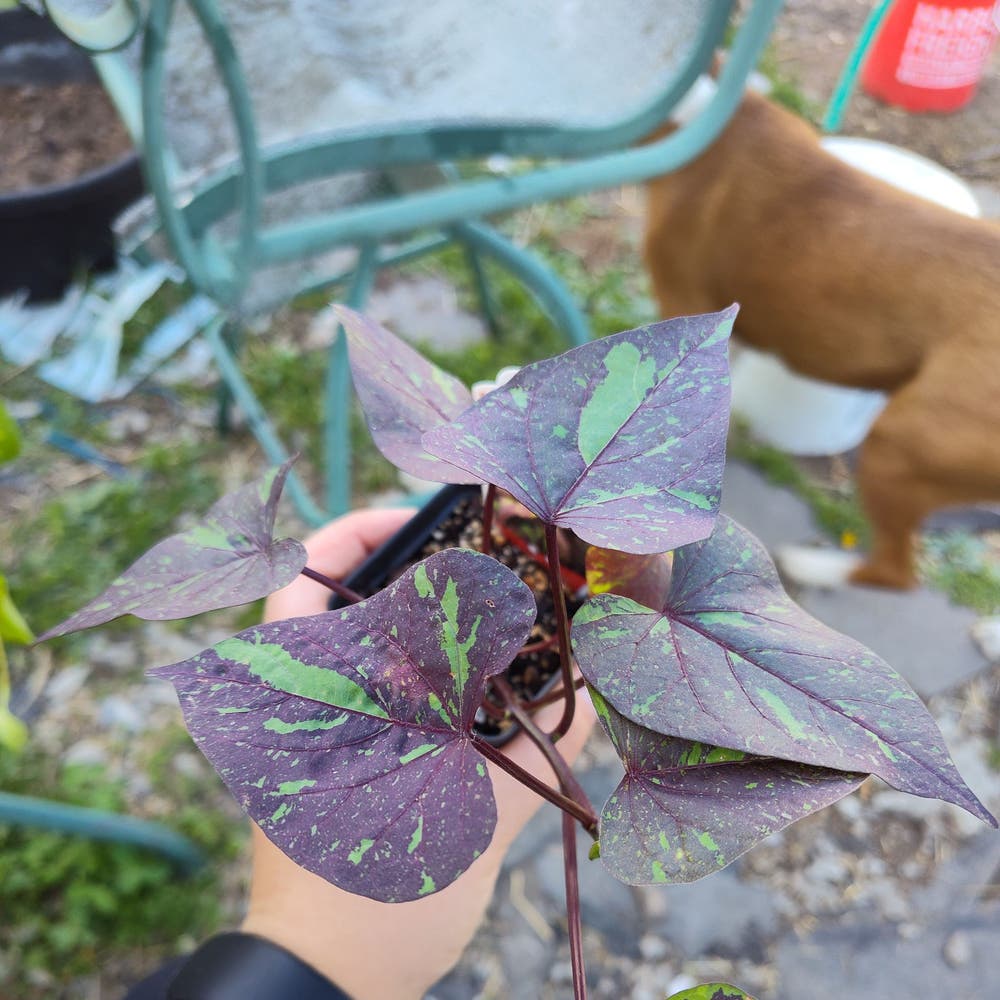By Kiersten Rankel
Jun 11, 2024•4 min read
- Light, temperature, and humidity must be balanced to prevent leaf curl.
- Pests and diseases contribute to curling; use soapy water, neem oil, or predators.
- Consistent care and monitoring are crucial for healthy, flat-leaved Ipomoea corymbosa.
When Environmental Love Goes Wrong
🌞 Light and Temperature Tantrums
Light can be a fickle friend to Ipomoea corymbosa. Too much and your plant's leaves curl into themselves, trying to shield from the harsh rays. Not enough, and they reach out desperately, becoming more vulnerable in the process.
Temperature is another beast. Fluctuations can send your plant into a state of shock, resulting in leaves that curl as a defense mechanism. Keep the temperature steady, ideally between 65-80°F, to avoid these dramatic reactions.
💧 Humidity: Finding the Sweet Spot
Humidity is the unsung hero in the tale of leaf curl. Too dry and the leaves curl up, hoarding moisture like a miser. Conversely, excessive humidity can leave them limp and vulnerable to disease. Strive for that 40-60% humidity sweet spot.
To maintain this balance, consider using a humidifier or a pebble tray. These tools can help create a consistent microclimate for your plant, staving off the dreaded curl.
Unwanted Guests: Pests That Cause Trouble
🐜 Common Culprits
Spider mites, aphids, and thrips are notorious for turning the luscious leaves of Ipomoea corymbosa into their personal diners. Spider mites are tiny but mighty, leaving behind webbing and speckled leaves. Aphids prefer the fresh growth, clustering there and sapping the plant's vigor. Thrips, meanwhile, are stealthy, causing silvery trails and distorted leaves as they feast.
🚪 Show Them the Door
To evict these pests, start with a gentle wipe using soapy water or a diluted alcohol solution. This can dislodge the critters and curb their party. For a more persistent infestation, insecticidal soap or neem oil is your go-to bouncer. Apply with precision, targeting the pests without going overboard. Introducing natural predators like ladybugs or lacewings can also help maintain a pest-free zone. Regular checks are crucial; catch those freeloaders early and keep your Ipomoea corymbosa thriving.
Battling Diseases and Nutrient Woes
🦠 Fungal Foes and Viral Villains
Discoloration or a powdery coating on your Ipomoea corymbosa's leaves? That's the red flag of fungal invasion. Fungi love moisture like a cat loves catnip, so keep those leaves dry and the air moving. If you've already got an unwanted fungal party, it's time to break out the fungicides. Apply them with the precision of a surgeon—too much can do more harm than good.
For viral issues, it's all about defense. There's no cure, so prevention is your knight in shining armor. Keep those pruners sanitized and quarantine new plants like they're fresh off a plane during flu season.
🥦 Feeding Your Plant Right
Nutrient deficiencies can turn leaves into sad, curly shadows of their former selves. Yellowing? Your plant might be screaming for nitrogen. Edges look like they've been near a flame? Potassium is likely the missing guest at the dinner table. A balanced, water-soluble fertilizer is your best bet, but remember, moderation is the spice of life—too much and you'll have a nutrient party foul on your hands.
Regular soil tests are the crystal ball that can foresee and prevent nutrient deficiencies. Catch them early, and you'll keep those leaves as flat as a pancake. If you spot brown tips or leaf scorch, your plant is telling you to ease up on the fertilizer throttle.
Prevention: The Best Cure for Curly Leaves
🕵️ Regular Check-Ups
Vigilance is your plant's guardian angel. Like a personal plant detective, make it a habit to inspect your Ipomoea corymbosa for early signs of distress. Look for wilting, discoloration, or the infamous leaf curl. Catching these symptoms early is like cutting off a problem at the pass before it snowballs into a botanical nightmare.
🔄 Consistency is Key
A steady routine is your plant's best friend. Nail down a watering schedule that keeps the soil consistently moist, but not waterlogged. Think of it as hitting the hydration sweet spot—enough to quench your plant's thirst but not so much that it's swimming in excess.
Stable conditions are non-negotiable. Your plant craves predictability in its environment. This means maintaining a consistent temperature, shielding it from drastic light changes, and ensuring the humidity level is just right. It's like creating a microclimate utopia where your Ipomoea corymbosa can thrive without throwing a leaf-curling fit.
Airflow matters too. Prune your plant to promote good circulation, but don't get scissor-happy. Over-pruning can shock your plant more than a plot twist in a thriller movie. Remember, balance is key; your plant's health depends on it.
Ensure your Ipomoea corymbosa thrives with leaves unfurled 🍃 by leveraging Greg's custom reminders for the perfect balance of humidity, light, and watering.
#Ipomoea
27 posts on Greg-
Im growing a morning glory plant , how many times of day should I water it !?
-
When do morning glory’s typically bloom?
-
Hi friends! I noticed these little white grain-y things on most of my sweet potato vines' leaves, and I was just wondering what they were. They don't appear to be on the younger/newer leaves, so is this an okay/common thing for sweet potatos?! Thanks! #SweetPotatoVine
-
The COOLEST sweet potato vine I have ever laid eyes upon. 🥔 👀 #sweetpotatovine #happyplants #plantsmakepeoplehappy #plantaddict #outsideplants #greggang #greggers
-
One of the prettiest sweet potato vines. Look at that sun stressing. 💜💚🩷 #sweetpotatovine #outsideplants #pinkfrostsweetpotatovine #happyplants #plantaddict #theamigos #plantsmakepeoplehappy #planttherapy
Browse #Ipomoea
Learn More About
Christmasvine Care
- 🌟 Benefits
- 🪴 Soil
- 🍂 Black Spots on Leaves
- 🤔 Problems
- 🤒 Root Rot
- 💦 How Often to Water
- 💨 Humidity
- ✂️ Pruning
- 🪴 Repotting
- 🌡️ Temperature
- 🍃 Leaves Curling
- 🍃 Leaves Falling Over
- 🍂 Brown Spots on Leaves
- 🍂 Yellow Leaves
- 🍃 Leaves Dropping
- 🌞 Direct Sunlight
- 🌤️ Light Requirements
- 🐞 Bugs
- 🍃 Leaves Drooping
- 🍂 Leaves Mushy


